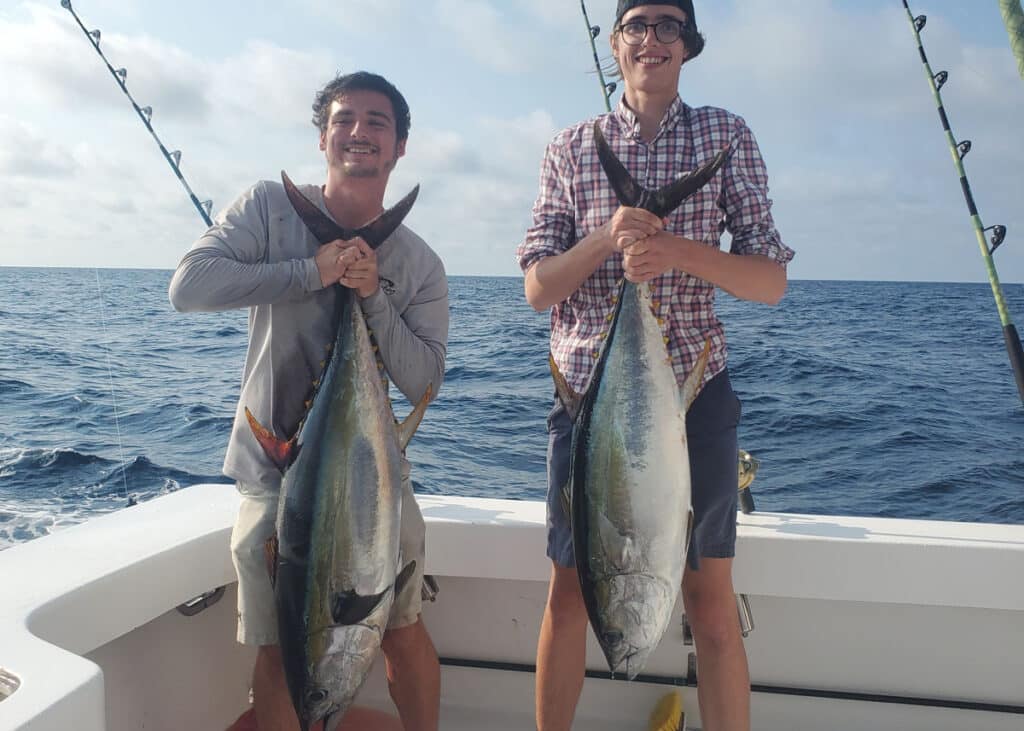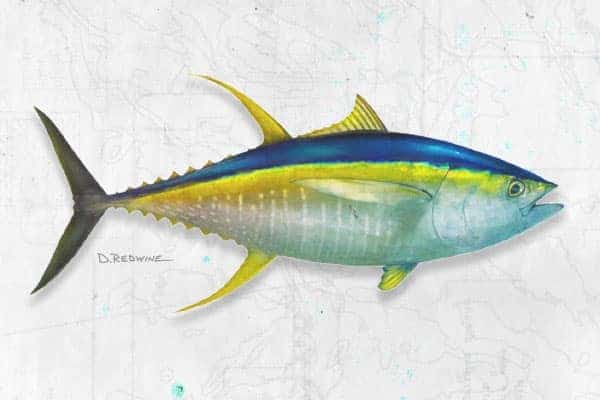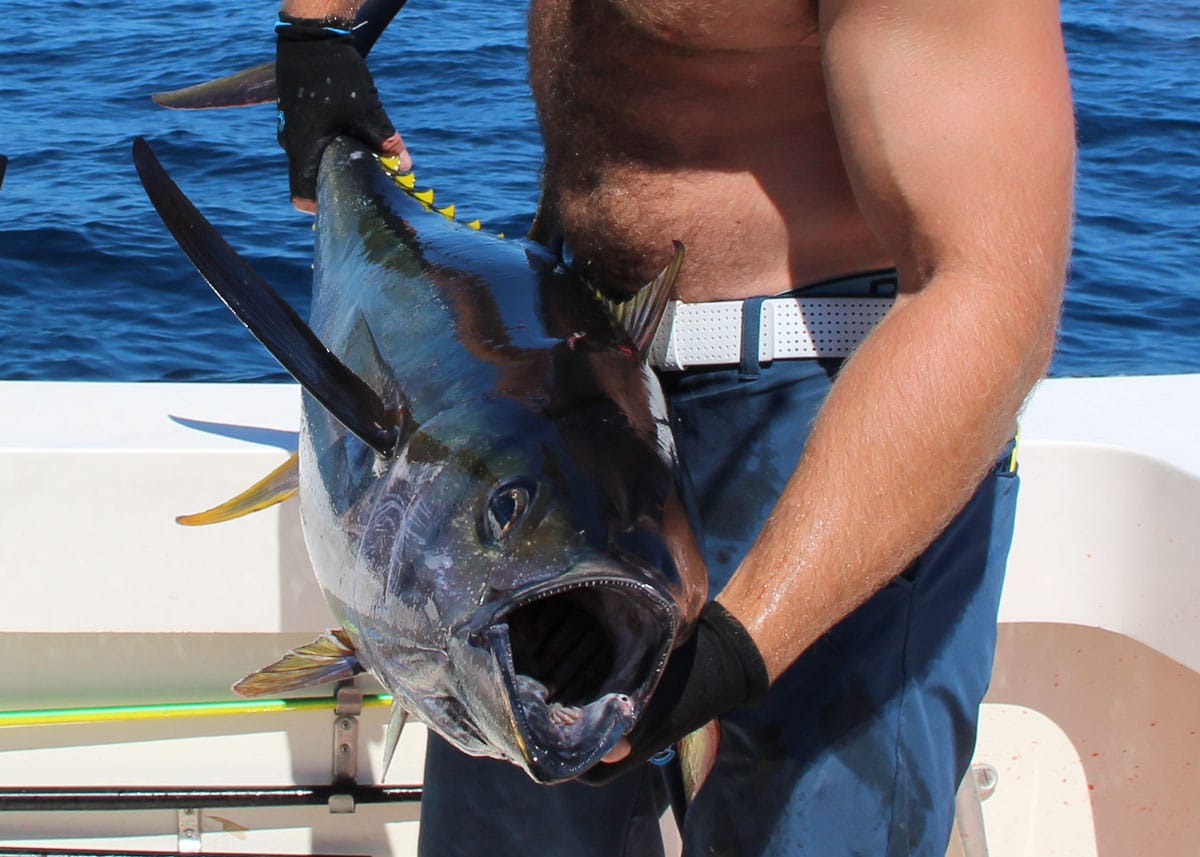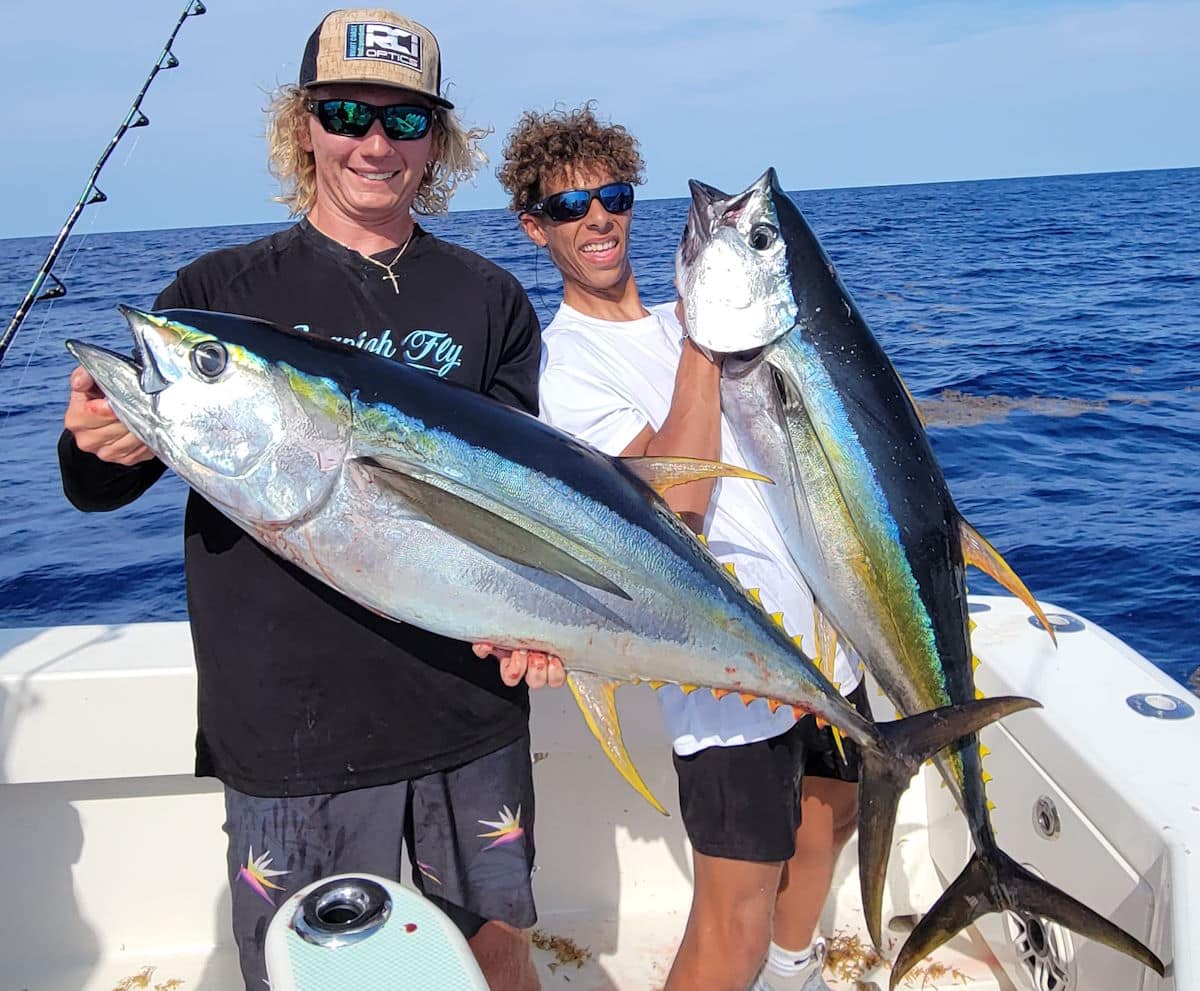Thunnus albacares
Family:
Scombridae
Other Common Names:
Ahi (big ones), shibi (small ones), allison tuna
Description
The yellowfin tuna has a black to bluish back and a bronze and silver belly. They have distinct yellow fins and fairly long pectoral fins. Smaller tuna have a series of white spots and lines on their sides, but these fade with age. These tuna inhabit all tropical and temperate oceans of the world and are normally found well offshore in clean water. They are a schooling fish, and, in some areas, they tend to travel or feed with other larger creatures like sharks, whales and dolphins. Yellowfin are prized table fare and a very popular sport fish that can be caught on trolling baits, both live and dead, and on a variety of lures and vertical jigs. They are typically a voracious feeder but also very wary of visual aspects. Minimal terminal tackle and fluorocarbon leaders greatly improve an angler’s ability to trick the tuna into a bite.
Ideal Conditions for Yellowfin
SatFish maps show you where to find ideal conditions for yellowfin:
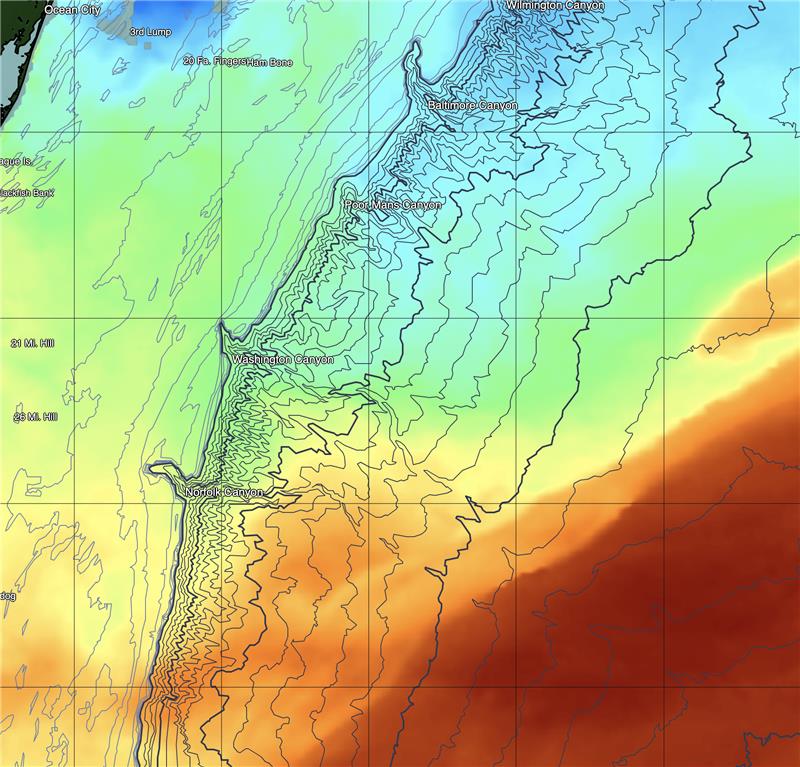
- Sea Surface Temperature:
64-86°F / 17-30°C
(64-74°F / 17-23°C is ideal) - Water Color / Chlorophyll:
Clean blue to blue-green, 0.01-1 mg/m3 - Bathymetry:
Offshore canyons & seamounts; will venture into shallower water (20-50 fathoms) when offshore water pushes into coastal areas
Given the right temperature, yellowfin have a plethora of areas where they can be found. Seamounts and warm water temperature breaks are an excellent option to find these fish as upwelling occurs, providing nutrient rich water for baitfish to aggregate. It is also not uncommon for yellowfin to gravitate towards various forms of offshore structures. This can include oil platforms, kelp paddies, or any other sorts of different flotsam. These pieces of structure can gather on current breaks and can hold large aggregations of bait to which yellowfin are attracted to.
Yellowfin Migration Patterns
Yellowfin follow patterns driven by ocean temperature, food availability, and regional current systems. In the Western Atlantic, yellowfin are commonly found along the U.S. East Coast and into the Gulf of Mexico, especially during the warmer months from May through September. Their presence is often tied to the northward extension of the Gulf Stream, where warm water and forage species concentrate.
The Gulf of Mexico is not only a prime fishing ground — it’s also a known spawning area for yellowfin, with peak activity occurring from late spring through summer, typically in offshore waters. Meanwhile, off Baja California, yellowfin are present most of the year but peak in abundance from late spring into early fall, aligned with seasonal upwelling and increased bait activity.
In the central Pacific, especially around Hawaii, yellowfin are caught year-round. These waters offer stable warm temperatures and abundant prey, making them a hotspot for both commercial and recreational tuna fishing. Summer months often bring larger aggregations and spawning behavior in the region.
SatFish Regions Where Yellowfin Can be Found
- Baja/ Mexico (all regions)
- Atlantic Coast (all regions, increasingly north as water warms)
- Southern California (often summer – fall)
- Hawaii
- Gulf of Mexico (all regions)
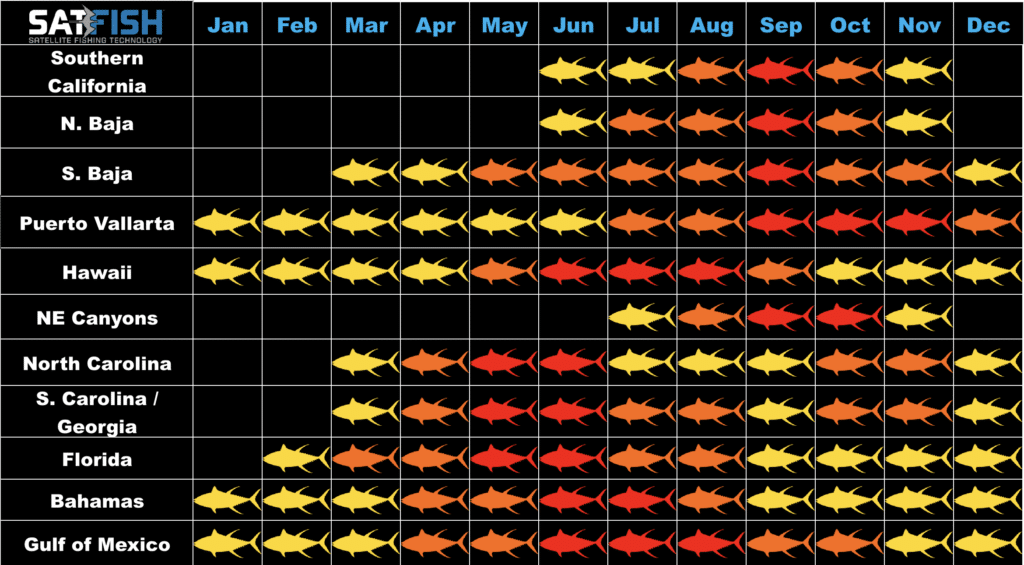
How to Catch Yellowfin
Yellowfin are schooling fish, often grouping by size class. Large schools of smaller fish (“footballs”) may blitz bait on the surface, while larger tuna often cruise deeper or under floating structure like logs or debris.
Here are a few tried-and-true techniques:
Trolling: Use skirted lures, cedar plugs, or feathers. Focus on temperature breaks, seamounts, and current edges.
Casting to Foamers: When you see tuna busting bait at the surface — often with birds diving overhead — cast poppers, stickbaits, or metal jigs for explosive hits.
Live Baiting & Chunking: Especially effective near oil rigs, FADs, or during overnight trips. Sardines, flying fish, and squid are top baits.
Dolphin Pods (Eastern Pacific): In certain regions like the Eastern Tropical Pacific, tuna may school beneath pods of dolphins. Trolling around or through dolphin pods has been an effective technique for this situation.
